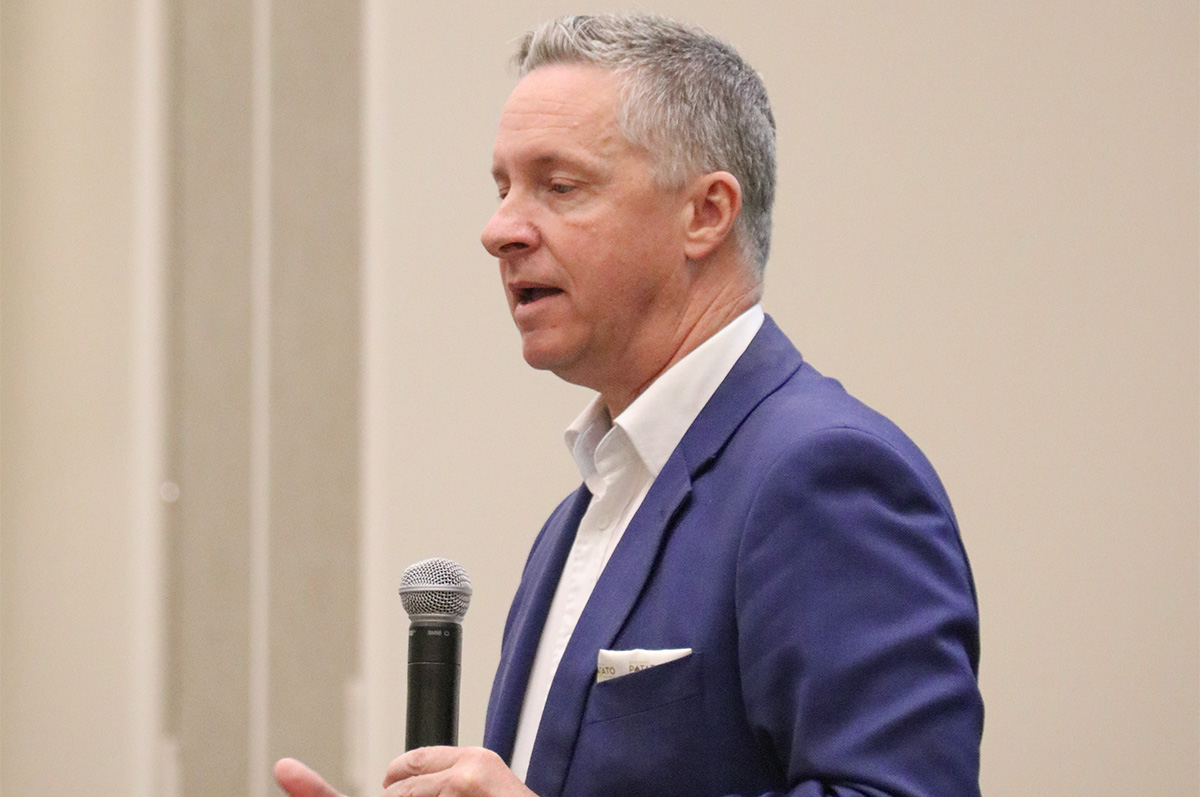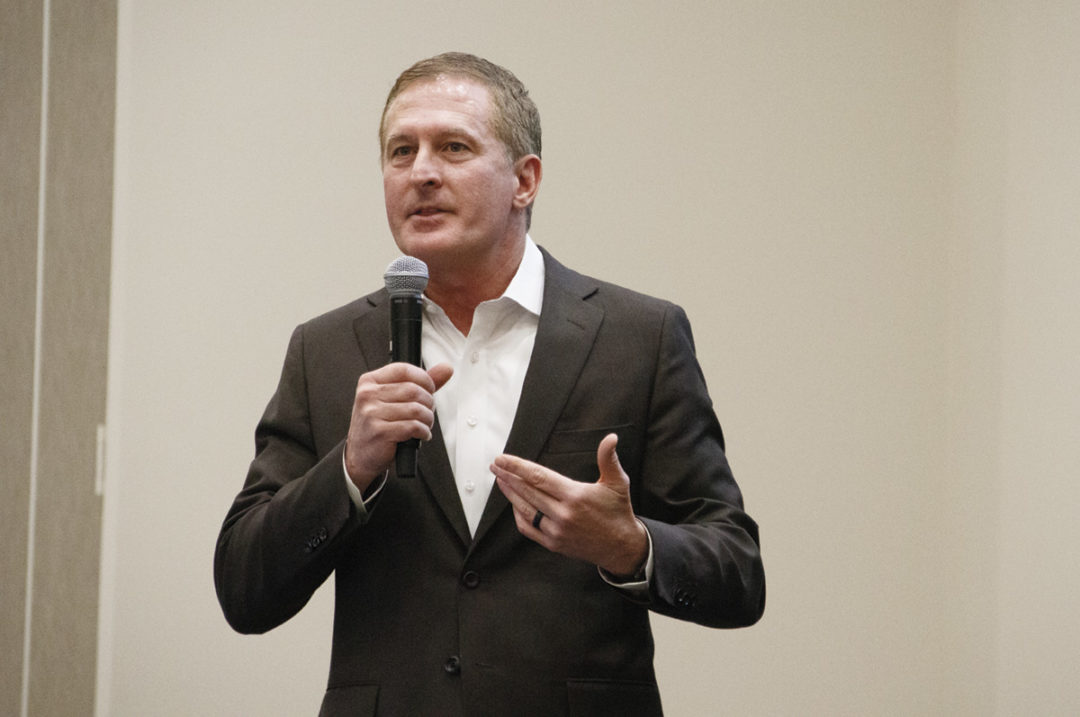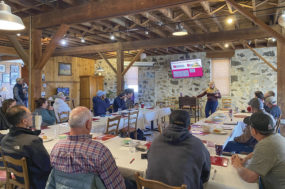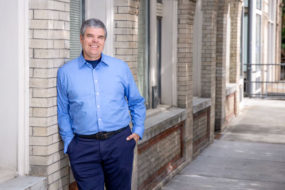On Nov. 15, the Idaho Potato Commission (IPC) hosted its annual Big Idaho Potato Harvest Meeting in Idaho Falls. The “state of the industry” meeting welcomed growers, packers and processors from across the state gathered to network and learn about how the larger industry affects their operations and vice versa.
The tone of the meeting focused on three primary topics: politics, economics and marketing. The following is a smattering of the material covered.
Idaho State Department
It’s no secret that the vast majority of Idaho farmers and ranchers lean to the right on the political spectrum. With the influx into the state over the last few years of people from bluer states, there is concern in many people’s minds that Idaho is becoming a “little California.” However, Idaho Secretary of State Phil McGrane told attendees they could put many of those fears to rest.
“Orange County Republicans are not the same as lifetime Idaho farmer Republicans,” he said. “But Idaho is getting redder.”
McGrane said that his department's biggest focus right now is providing a smooth 2024 election for Idaho voters, particularly leading into the primaries on May 21, 2024, where McGrane believes, as in years past, the “overwhelming majority of races” will be decided.
National Potato Council
Agriculture got a temporary resolution with Congress’ passage of a one-year farm bill extension. However, that still doesn’t leave much time for the industry to rest on its laurels.
“We all in ag have to be pounding on the table to get a new farm bill done before the extension expires,” stressed Kam Quarles, CEO of the National Potato Council, potatoes’ lobbying voice in Washington, D.C. “Otherwise, we’ll be working with decade-old policies.”
Crucially, 85% of farm bill funding goes toward public nutrition programs, such as school lunches and the Supplemental Nutrition Assistance Program (SNAP). On top of that, new dietary guidelines for Americans are slated to be released in 2025. Effectively communicating the virtues of potato consumption to the public is likely to prove critical for the potato industry in the coming months.
“If you’re not thinking about nutrition over the next year, you need to be,” Quarles said. “And you’ve got to be talking to the urban and suburban districts. ... We’re going to win these fights based on our sound science.”

Kam Quarles, CEO of the National Potato Council, told Idaho potato growers that their product’s nutritional value should be at the forefront of conversations with government officials and consumers. Photo by Tyrell Marchant.
Potatoes USA
In Idaho and across the U.S., potatoes remain the most widely consumed vegetable by a wide margin, Blair Richardson, CEO of Potatoes USA, told attendees. U.S. market distribution for potatoes is very close to pre-COVID-19 levels, he reported, and more potato items are on menus than ever before. However, there are fewer restaurants now than a half-decade ago, making it difficult to maintain the food service portion of the potato market.
The U.S. also now imports more potatoes than it exports. Richardson said one of his organization’s main focuses is regaining that lost share of the domestic market.
Richardson discussed Potatoes USA’s efforts to correct misperceptions put forth in the media about the nutritional value of potatoes, citing multiple instances when media outlets have published potato-friendly corrections to their broadcasts and publications after having Potatoes USA reach out to them. He believes the organization’s efforts in that regard, while difficult to measure, have a powerful impact on the industry.
“You have to fight every fight,” he said. “But if you do it in a respectful way, good things happen. … The biggest fight we have in front of us is not marketing. It is getting involved in the science and politics of food.”
Idaho Potato Commission
The event concluded with Jamey Higham, president and CEO of the IPC, highlighting the IPC’s efforts to market the Idaho brand.
With its latest marketing campaign, the IPC is targeting audiences in the range of 25 to 54 years old – a demographic Higham described as “light potato buyers.” The plan includes shifting some attention and advertising dollars from traditional broadcasting channels to streaming services, as well as continued partnerships with the American Heart Association, the American Diabetes Association and the ever-popular Famous Idaho Potato Bowl.
The IPC has also bid farewell to its long-running TV ad campaign featuring a real Idaho potato farmer (portrayed by Middleton producer Mark Coombs) chasing down the “missing” Big Idaho potato truck, and introducing a new commercial titled “Dramatic Dinner,” which Higham played for attendees at the meeting.
A nature of adaptability and willingness to embrace change, Higham said, are what have allowed Idaho’s potato growers to thrive, and he hopes the IPC reflects that.
“Our best trait as an industry is our ability to solve problems,” he said.




.jpg?t=1687979285&width=640)



